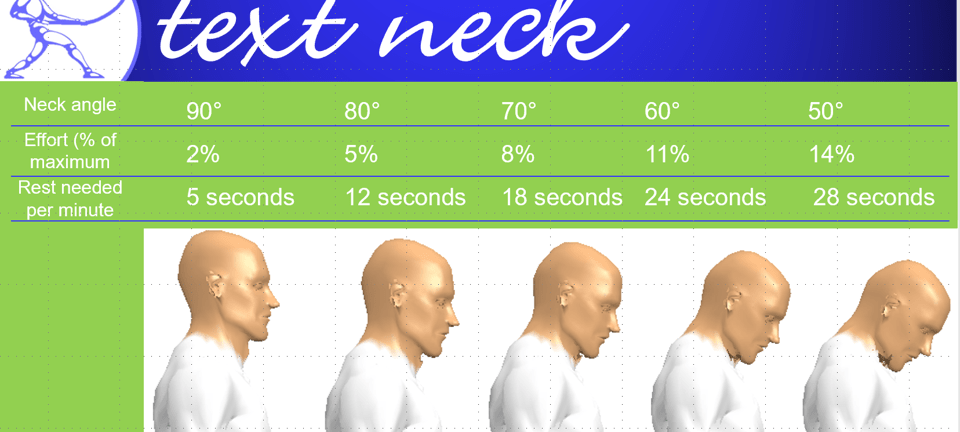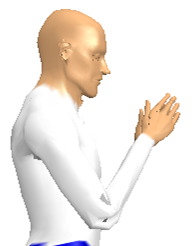This blog was written at the request of a family member who shall remain nameless, although you’ll know her if you see her, phone in hand. What is “text neck”? What causes it? How can you avoid it?
If you google “text neck”, you’ll learn that it refers to the posture formed by leaning forward for prolonged periods, for example when viewing a cellphone while reading and texting, reported to cause stress injuries. It’s much the same as the posture used to read a laptop (on your lap), or to read a book in your hands. We’ve all done this…what’s the big deal?
Humans have been reading books for hundreds of years….most of us don’t suffer too much….except when we were studying for hours. And it’s time that creates the challenge. “Keeping your head down” has become an analogy for focusing and working hard. If you had to “keep your nose to the grindstone” for too many hours, your neck was bound to ache at the end of the day.
Today’s young people, and many older ones too, have taken “focus” to a whole new level. We can spend hours looking at a tiny screen, watching videos or chatting with friends. I took a few minutes on a chilly April Sunday afternoon to use our biomechanical model to evaluate what happens to the muscles of your neck as you bend your head forward. I used an “average” male for this assessment….the loads might vary for people of different sizes, but the trends would be the same.
What does “good posture” feel like?
When your head is balanced nicely over your torso, our biomechanical model would say the neck angle is 90 degrees. In this position, your neck muscles are working at about 2% of maximum strength, and you might want about 5 seconds of rest every minute to avoid neck muscle fatigue. (Actually, research would suggest that you can probably maintain an effort of less than 5% of maximum almost indefinitely. But let’s assume you want to be comfortable…) For most of us, a 5 second “break” means taking a look to see what the dog is barking at, or glancing at the ceiling while considering a response to an email. The key is the ratio: 5 seconds of rest after 55 seconds of light effort is a ratio of 1:11.
What happens when you bend your neck?
As your neck bends forward, the ratio changes, so you need more rest to avoid fatigue. When you are in full “text neck” posture (i.e. looking at the screen you are holding in your lap), your neck muscles need 28 seconds every minute (almost 1:2) to recover.
This analysis only considers the muscles in your neck; it doesn’t consider what’s happening to the discs or ligaments in your spine. But it’s enough to show that bending the neck like this, for minutes at a time, is likely to cause muscle fatigue, and muscle aches.
Is the corrective action as simple as “hold the screen higher”?
Plenty of websites suggest just that. Let’s see what the biomechanics model predicts.
Raising your arms requires your arm muscles to work at 14% of maximum effort for your arms…requiring 28 seconds of rest per minute. Are you surprised? Your body already knew this….if it was easier to hold the phone up to your eyes, you would already be doing that!
Ideally, if you’re just reading a screen, you should place it on a stand, so it’s within your visual field, with your neck at “90 degrees”. If you’re interacting with the screen using your fingers for longer than a few minutes at a time, ask yourself if it’s time to switch to an external screen and keyboard. Even the CSA guidelines suggest limiting tablet use to 10 minutes at a time.
If you’ve got text neck pain, address the cause first! Then consult your health care provider for appropriate treatments.
Here are a few strength and stretching exercises that have helped us:
https://www.wikihow.fitness/Relieve-Text-Neck-Pain-by-Stretching
https://www.wikihow.com/Strengthen-Your-Neck
Carrie’s car favourite: https://www.hip.fit/e/car-headrest-chin-tuck



